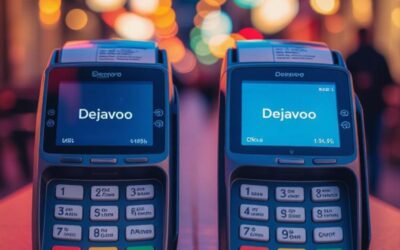
Visa CEDP Key Insights for Business to Business Payments
Written by: Zac Rogers
Learn about Visa CEDP, a secure payment solution designed to streamline cross-border transactions with speed, reliability, and fraud protection for B2B.
The world of B2B payments is shifting in a big way. Visa has replaced its long-standing Level 2/3 data processing standards with a new, more structured system: the Commercial Enhanced Data Program (CEDP). For many merchants, distributors, and ISVs, this represents not just a technical update, but a critical operational change. Staying ahead of this transition can mean the difference between protecting margin and unknowingly losing revenue.
At PayWavez, we’re here to help you understand what this means—and how your business can prepare.
From Level 2/3 to CEDP: What’s Changed?
Traditionally, merchants who processed commercial and government cards could access lower interchange rates by submitting enhanced transaction data (known as Level 2 and Level 3 processing). This included details like tax amounts, invoice numbers, and line-item descriptions—information that gave processors better visibility and resulted in reduced rates for merchants.
But that’s now changed. Visa has officially retired Level 2/3 processing and rolled out the Commercial Enhanced Data Program (CEDP) as the new standard.
What Makes CEDP Different?
Unlike Level 2/3, which was somewhat flexible, Visa’s CEDP is:
More structured: Data submission must follow precise, standardized formats.
More demanding: Merchants need to provide specific, protocol-aligned data fields that Visa’s updated systems can interpret.
Integrated across the ecosystem: POS systems, ISVs, payment gateways, and software providers now all need to stay compliant with these requirements.
In short—where Level 2/3 could be loosely met, CEDP is exacting. Systems and processes must adapt if businesses want to continue to qualify for enhanced interchange savings.
Why This Matters to Merchants (and Margins)
If your systems are not updated to support CEDP, you could be missing out on savings without even realizing it. Your old POS, payment gateway, or software setup may no longer qualify for the same benefits. That means you could be paying higher interchange costs than necessary—every single transaction.
For businesses handling a high volume of commercial or government card payments, this margin loss can quickly add up.
Who Needs to Pay Attention?
CEDP impacts a wide range of payment players, including:
- Suppliers, distributors, and wholesalers who process commercial cards
- ISVs and POS providers whose technology integrates payments
- Fintechs and payment service providers are working with merchants across industries
- If you interact with commercial or government transactions in any way, CEDP compliance should be on your radar.
How PayWavez Can Help
At PayWavez, we believe payment innovation should empower businesses, not burden them. That’s why we’re working with merchants, ISVs, and providers to:
- Audit existing POS and gateway setups for CEDP readiness
- Upgrade integrations to maintain compliance with Visa’s new requirements
- Ensure merchants continue to optimize interchange costs without disruption
- Provide clear guidance for a smooth transition to this new system
Benefits of Complying with Visa CEDP
- Lower Interchange Fees: Verified merchants benefit from reduced fees, typically 7-10% lower, leading to significant cost savings.
- Enhanced Payment Transparency: More detailed transaction data helps streamline accounts payable and improve auditing.
- Improved Dispute Protection: Invoice-level details aid in faster and more accurate dispute resolution.
- Better Cash Flow Management: Faster and reliable settlement processes improve merchant cash flow.
Final Thoughts
The Commercial Enhanced Data Program isn’t just another update—it’s the new standard for B2B payments. With stricter requirements, businesses that fail to adapt may unknowingly lose margin. Now is the time to prepare.
PayWavez is ready to help you navigate this change with confidence, ensuring your systems stay compliant, cost-efficient, and future-ready.
Let’s connect today to make sure you’re taking full advantage of Visa’s new framework.
FAQs
1. What is Visa’s Commercial Enhanced Data Program (CEDP)?
CEDP is Visa’s new standard replacing Level 2 and Level 3 data processing for commercial card payments, requiring more accurate and detailed transaction data submission for lower interchange fees.
2. When does CEDP take full effect?
CEDP launched in April 2025, with key enforcement starting October 17, 2025, when merchants must be verified to qualify for reduced interchange rates.
3. Who needs to comply with CEDP?
Merchants, distributors, ISVs, payment gateways, and fintechs handling Visa commercial or government card transactions must comply.
4. What happens if I don’t comply with CEDP?
Non-compliant merchants may lose access to lower interchange rates and face higher transaction fees, impacting profitability.
5. How can businesses prepare for CEDP?
Businesses should audit payment systems, ensure complete and accurate data submission, and work with payment providers to achieve CEDP verification and compliance.
Winning with PayWavez
Our Blog
Payment Gateway Integration Services in Alabama Gulf Shores | Simplify, Secure, and Grow Your Business with PayWavez
Written by: Zac RogersUpgrade your business in Alabama Gulf Shores with PayWavez! We provide fast, secure, and affordable payment gateway integration services to help you accept payments anywhere — online or in-store.The Future of Payments Is Here In the heart of...
Payment Processing Solutions for Alabama Businesses | Dejavoo, Quantic, Union, Clover, and Karona with Leading Gateways
Written by: Zac RogersDiscover the best payment processing solutions for Alabama businesses. Explore secure, scalable POS systems like Dejavoo, Quantic, Clover, and gateways including Auth.net and NMI to boost your local and eCommerce sales.Retail and eCommerce...
Dejavoo P1 vs P3 | Choosing the Right Android Payment Terminal for Your Business
Written by: Zac RogersEmpower your business with Dejavoo’s trusted payment technology — explore Dejavoo P1 vs P3 terminals at Paywavez today, and take your transactions to the next level.Reliable payment processing is the backbone of customer satisfaction and business...




